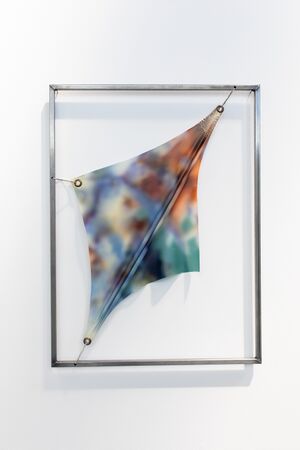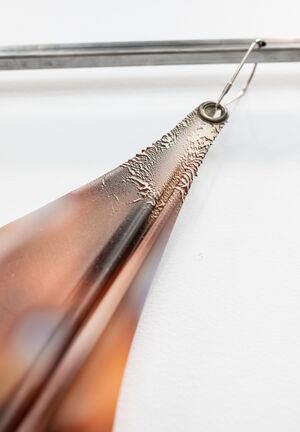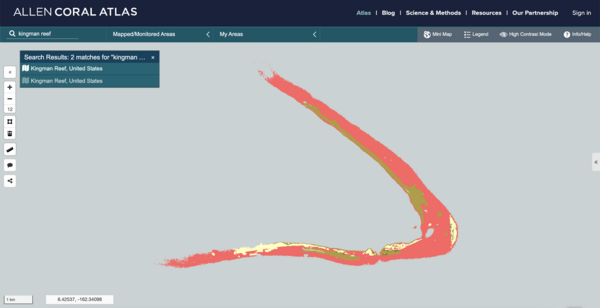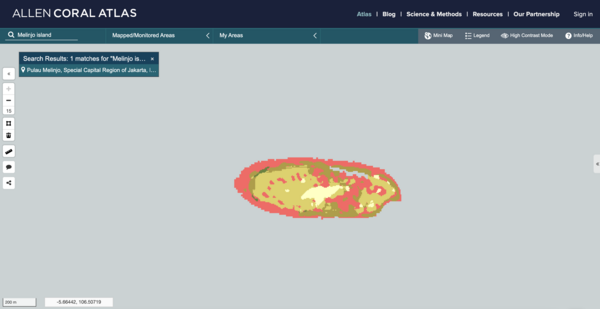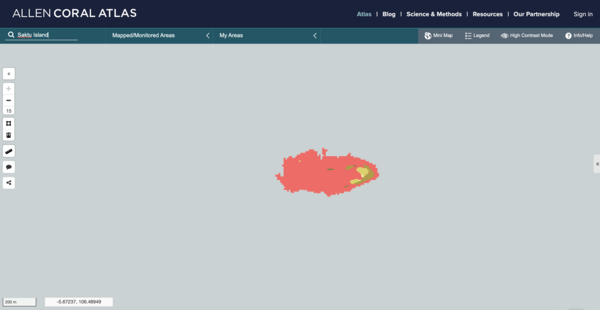NoshThesisWikiPage
- Gather texts
- Gather visuals
- Order them all on this page
Pale Futures by Nosh Neneh
Thesis submitted to: Piet Zwart Institute, Willem de Kooning Academy, in partial fulfilment of the requirements for the final examination for the degree of: Master of Arts in Fine Art & Design: Lens-Based.
Adviser: Steve Rushton
Second Reader: Kate Briggs
Contents
- Introduction
- Pale Futures (description of work; report on processes)
- Living Monuments of the Deep (description of work; report on processes)
- Conclusion
Introduction
This text centres around two of my projects: Living Monuments of the Deep (2023) and Pale Futures (2024, in progress)
The piece Pale Futures will comprise 3D sculptures of vanished coral reefs crafted from biodegradable material. Adorning it are images of neon coral bleaching (or colors are used to refer to the neon coral bleaching). The piece aims to instil awareness about the disappearing coral reefs and the importance of their protection. In recent years, the health of coral reefs has been deteriorating rapidly. Climate change poses the greatest threat to coral. As the Earth's temperature rises, so does the temperature of the seawater. A mere increase of 1 to 2 degrees can lead to coral mortality.
Coral reefs play a vital ecological role. Often found in waters with limited phytoplankton, the foundation of the marine food chain, they create true oases of life amidst the ocean desert. Moreover, they serve as natural barriers against cyclones, storms, and erosion, absorbing the force of the waves. Coral reefs serve as havens and nurseries for marine creatures, contributing to biodiversity and promoting fish populations, among other benefits. They purify water and act as excellent coastal protectors during extreme weather events.
The piece Living Monuments of the Deep was a collaboration between...[paste text here]
It is a multimedia project consisting of a photo-series, sculptural costumes, and film. In the project, sculptural and monumental costumes honor endangered oceanic species which are on the IUCN (International Union for Conservation of Nature) Red list.
[Images of Living Monuments of the Deep]
'[text from]'DRAFT 1 - INTERVIEW NOSH NENEH- Thesis material
In this piece I am interested in which non-traditional photographic tools can be used to give different perspectives on environmental issues. In 2023 I used the ‘lens’ of Google Ocean (Google Street View underwater) to search for a phenomenon called color bleaching. For a long time I have been interested in the eco-system of coral reefs, with the focus on the vanishing of coral reefs. You probably know about the bleaching events of coral reefs where they become white. But more and more cases are popping up, especially around the Great Barrier Reef, that dying coral reefs turn vibrant neon colors. Recent studies found out that some corals were producing a ‘sunscreen layer’ in the form of a colorful neon display to protect themselves against warmer ocean temperatures. It’s like the corals are screaming for help. We’d witnessed the ultimate warning that the ocean is in trouble. In this new project Neon Warning I used the ‘lens’ of Google Ocean to search for corals that glow these bright neon colors in a last-ditch effort to survive.
Initially, research was conducted on vanished coral reefs using the Allen Coral Atlas.[1] The atlas maps coral reefs worldwide and monitors the threats they face, providing actionable data and a collective understanding of coastal ecosystems. Subsequently, a vanished coral reef is selected to create a 3D model, which is then printed using a 3D printer with biodegradable material. Finally, consideration is given to imprinting images of coral neon bleaching onto the material.
[Images here]
https://www.noshneneh.com/neon-warning
In this project, and in all my recent projects, I am inspired by Timothy Morten’s concept of ‘Hyperobjects’, entities that are huge — global warming, plastic in the ocean, nuclear waste — and seemingly incomprehensible.[2] Morton argues that hyperobjects create an ecological awareness far beyond normal human comprehension. To understand a hyperobject, we must transform the way we see and experience the universe. In line with this idea, I’m exploring ways in which non-traditional photographic tools can be used to give different perspectives on environmental issues. So, next to Google Ocean I worked with photographic tools such as CCTV, Thermal Imaging Camera’s and the NASA Image Library. One example is the series ‘Heat Up’, in which I used infra-red heat photography by following a group of children in The Hague who skipped school to demand action on climate change on the 7th of February 2019. One of the world's largest climate protests, where millions of children around the world took part in a global climate change protest. The infrared pictures accentuate the heat of their gathering rage and literally show that our world is on ‘fire’ (https://www.noshneneh.com/heat-up).
For the project Neon Warning I will for the first time collaborate with scientists in the field. By visualizing the beauty of scientific research, my aim is to contribute to already ongoing environmental debates.
Raw material / Interview by Aitana
So I'm asking you, what are you making right now, or these weeks?
I will talk a bit about my interest of the last months. I was, maybe you know already, quite interested in the ecosystems of coral reefs and especially in the finishing of coral reefs. So the last month I used Google Ocean few, the lens of Google Ocean to search for a phenomenon called color bleaching, the color bleaching of corals.
So on on the Google Ocean view, I went to different islands in the sea, so on the water to search for this phenomenon. M And, um, I will explain a little bit about the phenomenon. It's, um, Like you have the, you know, the, the, the bleaching of corals, where corals become white.
after a while, so they, they're dying. Okay. But, um, like now some studies found out, um, and a couple, um, a couple of years
What will it be?
3D sculptures of vanished coral reefs crafted from biodegradable material. Adorning it are images of neon coral bleaching (or colors are used to refer to the neon coral bleaching).
I remained focused on exploring the phenomenon of neon coral bleaching and discovering new ways to represent it visually. Neon bleaching occurs when environmental stressors such as rising water temperatures cause corals to expel the colorful algae that live within their tissues. While some corals turn ghostly white when they bleach, others can instead turn a bright range of neon colors in a final effort to survive. The corals' neon manifestation seems to be an urgent call for help. By zooming in on this neon bleaching, I try to show its paradoxical spectacle – at once captivating in its surreal appeal and intensely alarming as a harbinger of ecological collapse.
This is a follow-up step to my previous project on coral neon bleaching.
Scratches 'May or May not'
Make a list of different coral reefs that are almost vanished.
- Pulau Seribu island group/Jakarta Bay
- Melinjo Island
- Saktu Island
- Seychellen
- Kingman Reef
Make screenshots from the Allen Coral Atlas of coral reefs that are almost vanished based on data from the Allen Coral Atlas.
Kingman Reef
Melinjo Island
Saktu Island
Endangered Coral Species
- Dendrogyra cylindru (Pillar coral)
- Mycetophyllia ferox (Rough cactus coral)
- Orbicella annularis (Lobed star coral)
- O. faveolata (Mountainous star coral)
- O. franksi (Boulder star coral)
- A. globiceps
- A. jacquelinae
- A. lokani
- A. pharaonis
- A. retusa
- A. rudis
- A. speciosa
- A. tenella
- Anacropora spinosa
- Euphyllia paradivisa
- Isopora crateriformis
- Montipora australiensis
- Pavona diffluens
- Porites napopora
- Seriatopora aculeata
Project proposal Living Monuments of the Deep + Pale Futures
!"#$%!&'&$
WHAT DO YOU WANT TO MAKE AND HOW?
By the middle of 2023 I planned to make an immersive installation comprising a screening of the film 'Living Monuments of the Deep' alongside a series of sculptures titled 'Pale Futures’ (working title). Living Monuments of the Deep. Living Monuments of the Deep is a multimedia project consisting of a photo-series, sculptural costumes, and film. In the project, sculptural and monumental costumes honor endangered oceanic species. For this project, I researched ocean species on the IUCN (International Union for Conservation of Nature) Red list, which is a critical indicator of the health of the world's biodiversity. How do we relate to a species on the edge of extinction? I selected creatures playing key roles in the ocean’s- chemistry and ecosystem, and which have varying causes for extinction. Subsequent to that, I crafted sculptural costumes which I captured in photographs and film. The endangered ocean species are the fundaments of these sculptures costumes. Two years back, the 'Living Monuments of the Deep' project started, a collaboration with costume designer Esther van der Heijden. Last May, we headed to Lanzarote, capturing the performances of seven distinct sculptural costumes. I chose Lanzarote not just for the endangered Angel-shark, which inspired one of our sculptural costumes, but also for its hauntingly dark and otherworldly landscape — a suggestive nod to the ocean's enigmatic depths. Stratified City became a convergence point, where surreal alien vistas seamlessly intertwined with natural amphitheaters. For my graduation project, I aspire to take a profound leap forward utilizing the filmed material from Lanzarote. I aim to delve deeper into the extensive footage we've gathered, seeking unexplored possibilities within it. I aspire to discover innovative means of blending the diverse creature performances into a singular cinematic experience. Can these varied performances intertwine within a unified narrative? Furthermore, I'm keen to explore the impact of sound design on existing edits as well as the potential for crafting an entirely new composition from the wealth of footage. Additionally, I wish to investigate the transformative effect a voice-over narration could have on the visual material, seeking to unlock fresh layers of narrative and emotive depth within the project. In this film, I aim to depict absurd hybrid creatures that deconstruct the boundaries between humans and animals. The setting is an uncanny, deserted ocean in which only a few creatures are left wandering and searching. The project draws inspiration from various theories and thinkers who have contemplated humanity's relationship with the natural world. The writings of Donna Haraway, particularly her concept of the "Chthulucene," resonate with this work. Haraway urges us to reimagine our connections with other species and embrace a multi-species approach to existence. By creating hybrid creatures and blurring the boundaries between humans and animals, I aim to provoke reflection and challenge conventional notions of species hierarchy. Pale Futures Aligned with the concept of 'Living Monuments of the Deep’, the sculpture series 'Pale Futures' similarly centers around endangered ocean species. In 'Pale Futures,' a series of sculptures emerges, embodying imprints of endangered coral species' patterns — a visual journey resembling forthcoming fossils. What stories do these structures and lines narrate? What revelations lie within the replication of these coral patterns? To identify endangered coral species, I once again refer to the IUCN Red List, highlighting a total of 25 coral species marked as 'endangered' or 'critically endangered.' Examples include Mycetophyllia Ferox and Orbicella Annularis. (Visual appendix page 8) The imprints will be crafted from algae-based material. Currently, I am engrossed in experiments within the lab of the Living Station, refining the formula for these algae-based sculptures. Besides this, 3D molds of various endangered coral species' patterns are being generated using a 3D printer for biomaterials, crafted within Blender. These molds become vessels for the poured algae-based material, yielding fossils adorned with imprints mirroring those of endangered coral species. The structures of corals serve as a refuge, breeding, and feeding area for numerous sea species. Yet, what deeper narratives are inscribed within these patterns? Ultimately resembling enigmatic drawings left behind by corals, what further revelations can we decipher from these imprints? This inquiry becomes a quest to interpret the intricate messages these seemingly artistic imprints convey, left behind by the coral as a legacy for us to decipher. I'm contemplating integrating the phenomenon of neon coral bleaching, which I've been researching for a year, into the 'Pale Futures' project. The upcoming period will reveal how this integration might occur and whether it aligns with the work's narrative.
[describe Solorensis and talk about how these are related (organic, sculptural)
Creating two projects that focus on endangered sea creatures is crucial in the current situation. The oceans house a diverse range of marine life, from small shrimps to big pillar corals, playing pivotal roles in the ecosystem by providing sustenance, habitats, and climate regulation. Yet, many marine species are endangered due to climate change, overfishing, habitat destruction, and pollution. These sea creatures face imminent extinction threats, and the disappearance of one species can trigger a domino effect, impacting the entire ecosystem. Their interconnectedness within marine systems is vital, influencing everything from food chains to overall ocean health. By raising awareness through this projects, we not only shed light on the imminent loss of these species but also underscore the broader consequences for our environment.
Through my visual and performative exploration in Living Monuments of the Deep, I invite viewers to engage in a dialogue about the ecological crisis and the imperative to recognize our interdependence with other species. By presenting sculptural costumes in a filmic context, I seek to generate a transformative experience that fosters empathy, prompting viewers to contemplate the impact of human activities on the delicate balance of the ocean ecosystem.
This project tries to reminds us of the importance of protecting species and biodiversity. By creating monuments for ancient creatures, I question the idea of permanence and confront the fact that life on Earth is fragile. By combining scientific knowledge and artistic expression, I strive to ignite
a sense of urgency and responsibility towards the preservation of our oceans and their diverse inhabitants.
RELATION TO PREVIOUS PRACTICE Through my work, I strive to foster a dialogue between viewers and the environment, bridging the gap between our modern existence and the fragile ecosystems that surround us. I am constantly challenged to find innovative ways to represent ecological issues. This installation is in line with
represent ecological issues. This installation is in line with different previous works:
Photo-series ‘Living Monuments of the Deep’ In Living Monuments of the Deep, sculptural and monumental costumes honor endangered oceanic species. In the project, sculptural and monumental costumes honor endangered oceanic species. The absurd, hybrid creatures transcend divisions between humans and animals, inviting us to re-evaluate our connection with species on the edge of extinction. The oceanic creatures in Living Monuments of the Deep have been marked as “endangered” on the IUCN Red List. They play key roles in the ocean’s chemistry and ecosystems, while being confronted with varying threats to their survival. (https://www.noshneneh.com/ livingmonumentsofthedeep) (Visual appendix page 7) Neon Waring The project 'Neon Warning' revolves around the phenomenon of coral color bleaching, which occurs when environmental stressors such as rising water temperatures cause corals to expel their colorful algae. While some corals turn ghostly white when they bleach, others can instead turn a bright range of neon colors in a final effort to survive. The coral’s ‘sunscreen layer’ in the form of a colorful neon display seems to be their last scream for help. By researching the neon bleaching event in Okinawa, Japan, I try to show the limited elasticity of coral reefs in constant strain. (https://www.noshneneh.com/neonwarning) REFERENTIES Albrecht, Glenn. 2019. Earth Emotions: New Words for a New World. Cornell University Press. Haraway, Donna. 2016. Staying with the Trouble: Making Kin in the Chthulucene. Durham, London. Haraway, Donna. “A Cyborg Manifesto: Science, Technology, and Socialist-Feminism in the Late Twentieth Century.” 1985. In Manifestly Haraway, 3-90. Minneapolist: University of Minnesota Press, 2016. Morgan, Luke. “The Grotesque and the Monstrous.” In The Monster in the Garden: The Grotesque and the Gigantic in Renaissance Landscape Design. Philadelphia: University of Pennsylvania Press, 2016. Morton, Timothy. 2013. Hyperobjects: Philosophy and Ecology after the End of the World. Minneapolis: University of Minnesota Press. Yoldas, Pinar. “Ecosystems of Excess.” In Art in the Anthropocene: Encounters Among Aesthetics, Politics, Environments, and Epistemologies, edited by Heather Davis and Etienne Turpin, 359-370. London: Open Humanities Press, 2015.
1 Living Monuments of The Deep, 2023, still of video collage, digital film, 4k, 5:37 min https://vimeo.com/873654764 password: endangered 2 Living Monuments of The Deep, 2023, still of video collage, digital film, 4k, 5:37 min https://vimeo.com/873654764 password: endangered 3 Living Monuments of The Deep, documentation of video collage projected on water, digital film, 4k, 5:37 min
4 Living Monuments of The Deep, documentation of video collage projected on water, digital film, 4k, 5:37 min
5 Living Monuments of the Deep + Pale Futures installation mock-up
6 Living Monuments of The Deep,Thelenota Ananas, 2023, video still, digital video, 4k https://vimeo.com/846051547 password: zeekomkommer 7 Living Monuments of The Deep, 2023, photo-series
8 Example of structure/pattern of the Mycetophyllia Ferox coral marked as ‘endangered’ on the IUCN Red List, Pale Futures
WHO CAN HELP YOU? • Kas Houthuijs (expertise in biomaterials) • Emiel Gilijamse (support with 3D printing + 3D scanning) • Sandrine D’Haene (Living Station) • Rene Henkens (Ecologist working at Wageningen Environmental Research (Universiteit Wageningen), part of ‘Turning the Tide’ project in Aruba) • Nichole Danser (ScubbleBubbles Foundation, Aruba) • Jesse de Bont (ReefSystems) • Museon-Omniversum (collection of coral species) • Esther van der Heijden (collaboration Living Monuments of the Deep project) • Danny van der Lucht (sound design Living Monuments of the Deep project)

